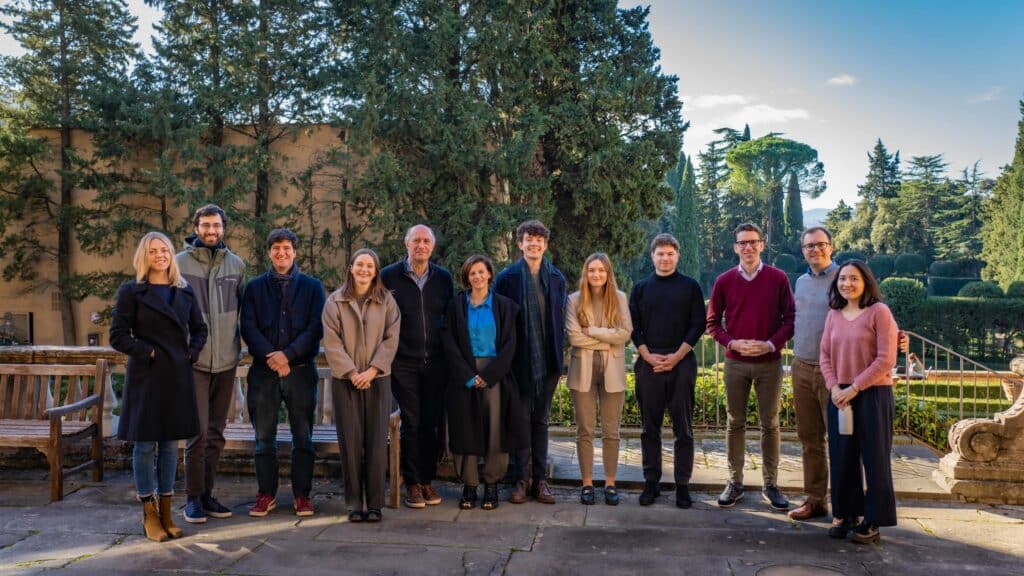Technology neutrality in hydrogen, opportunities and challenges: photocatalysis
Highlights from the event: Unproven or underestimated? Photocatalysis for hydrogen production
In this instalment of FSR Talks, Prof. Jean-Michel Glachant and Ilaria Conti hosted a discussion on innovation in the hydrogen space, focussing on an innovative and little-known technology, ‘photocatalysis’.
FSR welcomed Trevor Best, CEO of Syzygy Plasmonics to present photocatalysis and his work in developing this technology to produce decarbonised hydrogen and other products. Ronnie Belmans of KU Leuven and EnergyVille joined the panel as a co-discussant, framing the discussion in the context of scarce renewable electricity (RES-E) availability and placing photocatalysis within the wider taxonomy of other hydrogen production forms.
Watch the recording:
Photocatalysis is a photoreaction (i.e., driven by light) accelerated by the presence of a catalyst. In this way the process of photocatalysis is different to the majority of chemical reactions in industry, which are typically thermal reactions. In the 1970s, photocatalysis of water under ultraviolet light was one of the first examples of clean hydrogen production. However, in the decades that followed, steam methane reforming (SMR) emerged as the dominant production source, now constituting the vast majority of global hydrogen production. SMR is a thermal reaction driven by the combustion of fossil gas, as such there are massive associated emissions, roughly 8 tonnes of CO2 for every 1 tonne of hydrogen. In an effort to address these emissions and expand the applications of hydrogen, proponents have been looking to find a technology that can replace SMR.
Electrolysis of water has emerged as the most widely supported alternative in recent years, as it produces zero process greenhouse gas emissions, only hydrogen and oxygen. Whilst electrolysis will undoubtedly play a significant role in a future decarbonised hydrogen economy, it has limitations. Namely significant electricity requirements as well as expensive and scarce resource inputs, such as platinum. As a result, electrolysis is not cost-competitive with fossil hydrogen in the majority of circumstances, leaving the hydrogen landscape somewhat undefined and open to new innovations.
Photocatalysis has undergone massive improvements in efficiency in recent years, requiring only ~20% of the electricity input of electrolysis to produce the same quantity of hydrogen and the possibility to build the infrastructure out of abundant materials such as glass, aluminium, and plastic. The technology can also be adapted to a range of feedstocks and applications across the chemicals industry. Syzygy Plasmonics is one of the companies bringing photocatalysis towards cost competitiveness, building on technology from Rice University to improve the productive efficiency by ~500x in recent years. A recent IEA report suggested that roughly half of the CO2 emissions reductions in the energy sector from 2030 to 2050 would come from technologies that are known but not yet deployed commercially.
..photocatalysis can mitigate emissions as well as reduce energy and resource demand, in line with the company’s ambition to drive 1 gigaton of CO2eq emissions reduction by 2040.
Main takeaways from the session
The session opened with Ilaria Conti reiterating some of the aims of the EU Hydrogen Strategy, namely as regards electrolyser capacity and total hydrogen production. Ms. Conti suggested that it is important to keep aims of decarbonising the hydrogen sector firmly in line with wider, interrelated priorities, such as the drive to electrify sectors and the EU’s ambitions to reduce methane emissions.
Trevor Best gave the opening presentation explaining the different applications of thermal catalysis in the chemicals sector (fertilisers, fuels, plastics, etc.), and how photocatalysis can mitigate emissions as well as reduce energy and resource demand, in line with the company’s ambition to drive 1 gigaton of CO2eq emissions reduction by 2040. Mr. Best explained that they are currently at a Technology Readiness Level (TRL) of 7, as they have a demo system built, with full product launch envisaged for 2023 (TRL 9). This is comparable to methane pyrolysis which has a TRL of 6/7. To contextualise photocatalysis with other technologies in the space, Mr. Best explained that Syzygy expect to deliver distributed hydrogen at $1 – $3 per kg by 2030, far less than the current rate of $6 – $20 per kg. He also suggested that photocatalysis could deliver lower lifecycle greenhouse gas emissions than SMR, SMR with carbon capture and storage (CCS), pyrolysis and even electrolysis, with a guaranteed certification of carbon intensity for every kg of hydrogen produced.
Ronnie Belmans followed up with a presentation on the wider hydrogen economy. He outlined the demand for hydrogen, current and projected, as well as the relative strengths and weaknesses of other established and nascent technologies. Mr. Belmans shared the view of Mr. Best, that there was unlikely to be one dominant clean hydrogen production method in the short to mid-term. Suggesting that a ‘jigsaw’ of different technologies could serve a role in different areas and at different points in the decarbonisation timeline, with consideration for wider ripple effects in other sectors. Mr. Belmans suggested that our benchmark for judging technologies should focus on CO2 avoided per Mwh of RES-E consumed, i.e., the lowest possible RES-E required for the maximum CO2 reduction.






